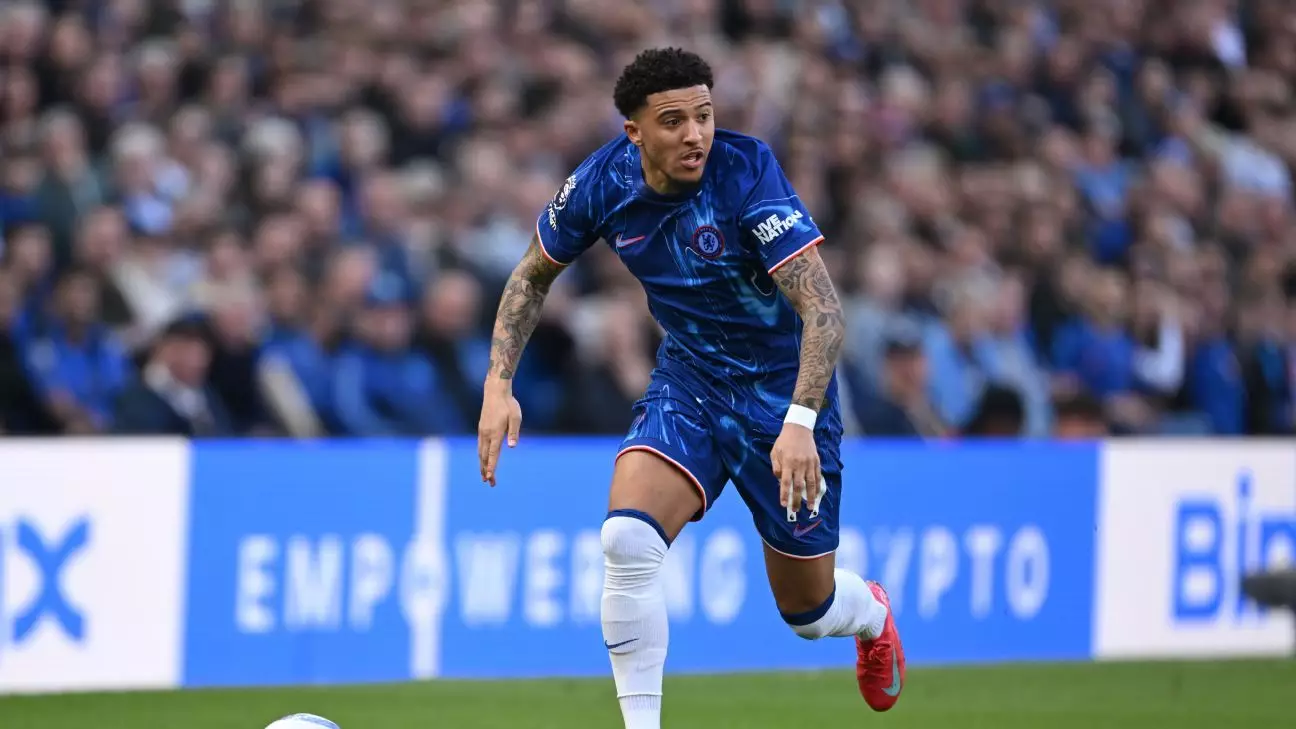In the bustling world of football transfers, financial agreements often dictate a player’s future. Chelsea’s current situation with Jadon Sancho exemplifies this dynamic, involving a £25 million ($32.5 million) permanent deal contingent upon their performance in the Premier League. Should Chelsea finish above 14th in the league, their commitment to secure Sancho’s services becomes obligatory. However, the clause permitting the loan deal to be revoked for a £5 million penalty creates a critical juncture that could shift the trajectory of Sancho’s career.
The fact that Chelsea is presently positioned in fourth, with a mere nine matches left, suggests that the odds favor a successful completion of the transfer. Nonetheless, the underlying financial mechanics raise questions about Chelsea’s confidence in Sancho as a long-term asset. In a football landscape that increasingly prioritizes homegrown and financially viable players, the ability to navigate such clauses reflects strategic prowess. The looming penalty signals a safety net companies often weave into contracts, but can Chelsea risk league performance slipping and incurring that cost?
Evaluating Sancho’s Performance and Utility
On paper, Jadon Sancho’s contribution this season, with two goals in 28 appearances, appears underwhelming. Given such a modest goal tally, one can’t help but wonder: is he worth the investment? The footballing world is rife with stars who shine upon transfer but fail to deliver their promise once settled into new surroundings. Although two goals might not tell the complete story of a player’s influence or potential, it does highlight the concern over his consistency and integration within Enzo Maresca’s system at Chelsea.
What further complicates matters is Sancho’s sporadic inclusion in the starting lineup this season. A player of Sancho’s caliber—often celebrated for his agility and offensive prowess—should be commanding a more prominent role. The hesitancy surrounding his position within the team could indicate broader issues; perhaps tactics are not aligning with his style, or he faces internal competition from players better suited to the current formation, leading to questions about whether he fits into Chelsea’s grand vision moving forward.
Manchester United’s Perspective
From Manchester United’s viewpoint, Sancho returning to Old Trafford could be seen as both a complication and an opportunity. Amid efforts to offload other players such as Antony and Marcus Rashford—who are also on loan—Sancho’s presence would inject further complexity into the squad’s restructuring. This prospective headache exemplifies how interconnected the modern football ecosystem has become: multiple player movements are seldom isolated events.
Incoming head coach Ruben Amorim’s authority over Sancho’s fate, should the player return, adds another layer of intrigue. How Amorim views Sancho compared to his predecessors could redefine the player’s trajectory. The opportunity for fresh leadership could either reignite Sancho’s form or lead to more turmoil in the already tumultuous landscape at United.
Ultimately, both Chelsea and United are now in a precarious situation. Chelsea must weigh potential losses against the benefits of long-term investments, while Manchester must evaluate whether holding onto Sancho aligns with their strategic vision amidst other player transactions. The public and fans alike will be watching closely, as this developing scenario could serve as a template for the rapidly evolving world of player transfers and club strategies.

